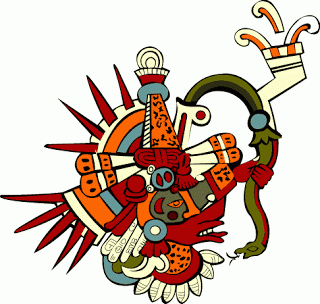
Ferguson
by MARTIN E. MARTY
Monday Sept 1 2014
Photo: Light Brigading / flickr creative commons
I am back to "sighting" for "Sightings", after what the editor called an August "hiatus" and this scribe called a Summer "sabbatical." Pleased to hear that we were missed, we are discussing whether (or not) to publish relentlessly through all the weeks next year.
What did we miss? Frank Bruni in "Lost in America" ("New York Times, "Aug. 25) captures too well the spirit of a dispiriting period. America right now, Bruni writes, is "a country surrendering to a new identity and era, in which optimism is quaint and the frontier is anything but endless. There's a feeling of helplessness... Americans are apprehensive... They are hungry for hope..." No political leaders inspire hope, and institutions seem self-serving and stagnant. Etc. You all know all of that. The sign above my desk reads "NO WHINING," so let us move on with "Sightings".
In a world of utter upset, one story more than any other appeared on the "religion in public life" screen, code-named "Ferguson," after the St. Louis-area site of a police shooting of an unarmed African-American man and the protests, disruptions, and sometimes chaos which followed.
I knew Ferguson, and one church there, decades ago when the mainly-white church-goers had little cause for complaint except for the noise of planes taking off and landing at the not-too-far-away Lambert field. Now Ferguson is largely black, though ruled by whites. Religion on the scene? Let's look.
The Rev. Bernice King drew notice as she dialogued with and promoted non-violence among thirty high-schoolers. Her "show your hand" poll turned up only one who, in the heat of the moment, thought her late father's non-violent approach had much of a presence or future in Fergusonian circumstances.
Among senior leaders, the Rev. Jesse Jackson showed up, marched some, but was treated to or mistreated in a brief media encounter when some angry locals encountered him, captive in a seat-belt, and subjected him to verbal attack: "Where were you?" Also, of course, the Rev. Al Sharpton was there and, no surprise, drew much media attention. Yet it was not these celebrities who left their mark. Others, somewhat later, and more quietly, appeared, served, and spoke up.
Most important during the protests were the actions of a new "Clergy United," 200-strong, who mediated between frustrated and angry local people and police. They were organized by, among others, Rob White, pastor of Peace of Mind Church and Bishop Edwin Bass of the Church of God in Christ.
The memorial service for the killed Michael Brown, at Friendly Temple Missionary Baptist Church in St. Louis, drew four or five thousand to hear eulogies, including from Brown's uncle, Pastor Charles Ewing, who said that his nephew's blood was "crying from the ground." (No one needed to explain the biblical references to these church-going citizen-mourners.)
Nationally, church leaders wrote eloquently about the need for local churches of all sorts to step up to the awesome challenges of racial prejudice, and to note that 86.3% of local churches in America failed to have at least 20% "diversity" in their membership. In this and all other such declarations, the "confessors" pledged new energies so that the voice of the local church might be more prominent, and so that congregations would embody and exemplify more diversity.
If forty and fifty years ago Evangelical-type churches, not only in the South, were seldom seen as leaders in moves to integrate and work for racial justice, let it be noted that one of the most eloquent statements of confession of guilt and resolve to change came from Mark Labberton, President of Pasadena's Fuller Theological Seminary, considered by many to be the flagship Evangelical ministerial school.
A sign, among many, to hope once again?
REFERENCES:
Bruni, Frank. "Lost in America. New York Times", August 25, 2014, The Opinion Pages. http://www.nytimes.com/2014/08/26/opinion/frank-bruni-lost-in-america.html"=0.
Elisa Crouch. "Rev. Bernice King Promotes Father Martin Luther King, Jr.'s Nonviolent Legacy in Ferguson. Religion News Service"/"Huffington Post", August 27, 2014. http://www.huffingtonpost.com/2014/08/27/bernice-king-ferguson n 5724894.html.
Jervis, Rick. "Clergy and activists help Ferguson protests remain calm. USA Today", August 24, 2014. http://www.usatoday.com/story/news/nation/2014/08/24/ferguson-protests-peaceful-clergy/14531429/.
AP. "Michael Brown's funeral draws thousands in Missouri. CBS News", August 25, 2014. http://www.cbsnews.com/news/michael-brown-funeral-draws-hundreds-in-ferguson-missouri/.
Banks, Adelle. "Ferguson letter from black clergy becomes interracial call for justice."Religion News Service", August 22, 2014.http://www.religionnews.com/2014/08/22/ferguson-letter-black-clergy-becomes-interracial-call-justice/.
Labberton, Mark. "Fuller's President Reflects on Events in Ferguson. Fuller Theological Seminary Presidential Communications", August 25, 2014. http://www.fuller.edu/offices/president/from-the-president/2014-posts/fuller-s-president-reflects-on-events-in-ferguson/.
Image Credit: Light Brigading / flickr creative commons
To read previous issues of "Sightings", visit http://divinity.uchicago.edu/sightings-archive.
Author, MARTIN E. MARTY, is the Fairfax M. Cone Distinguished Service Professor Emeritus of the History of Modern Christianity at the University of Chicago Divinity School. His biography, publications, and contact information can be found at www.memarty.com.
Editor, MYRIAM RENAUD, is a Ph.D. Candidate in Theology at the University of Chicago Divinity School. She was a 2012-13 Junior Fellow in the Marty Center.
Share
+1
Forward to Friend
Sightings Home Page Submission Guidelines Reprint Policy
Divinity School
Email us
ALSO from The Martin Marty Center:Religion and Culture Web Forum
"Copyright (c) 2014 UChicago Divinity School, All rights reserved."


















